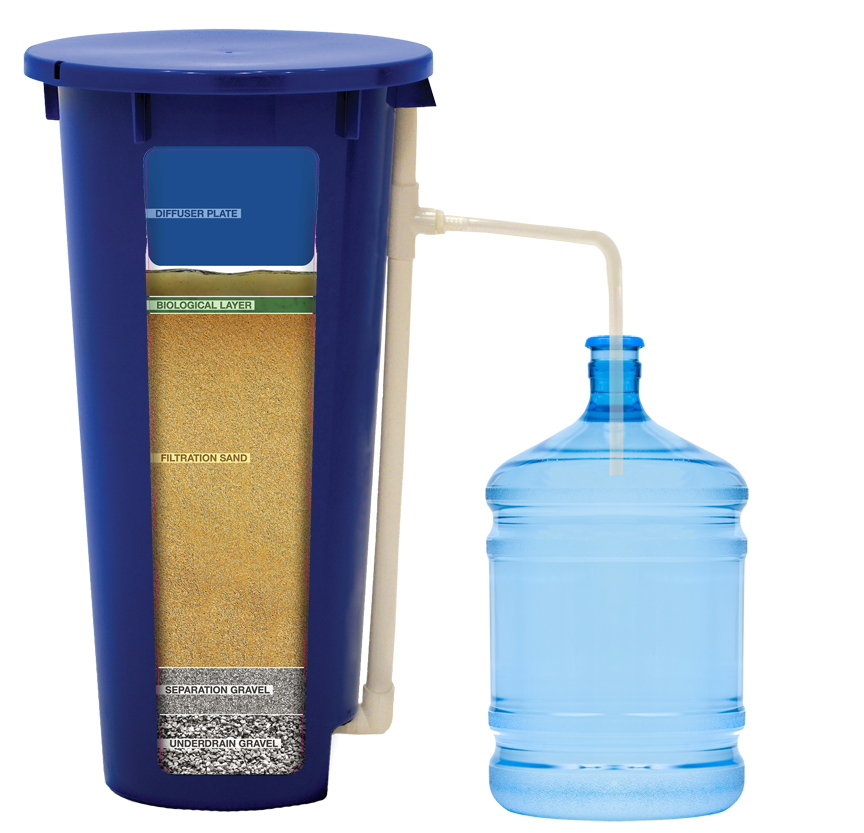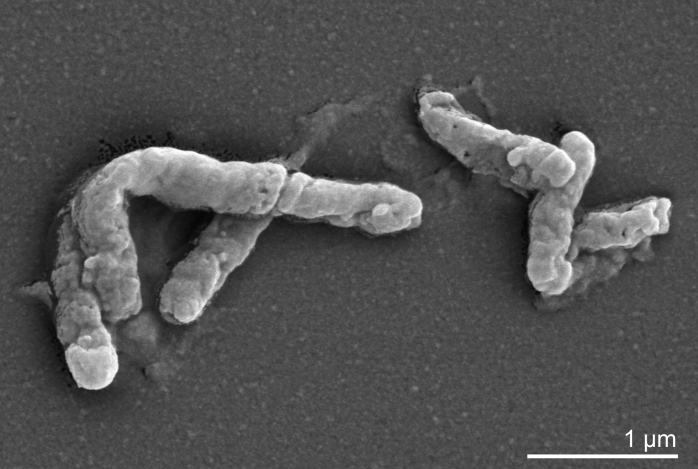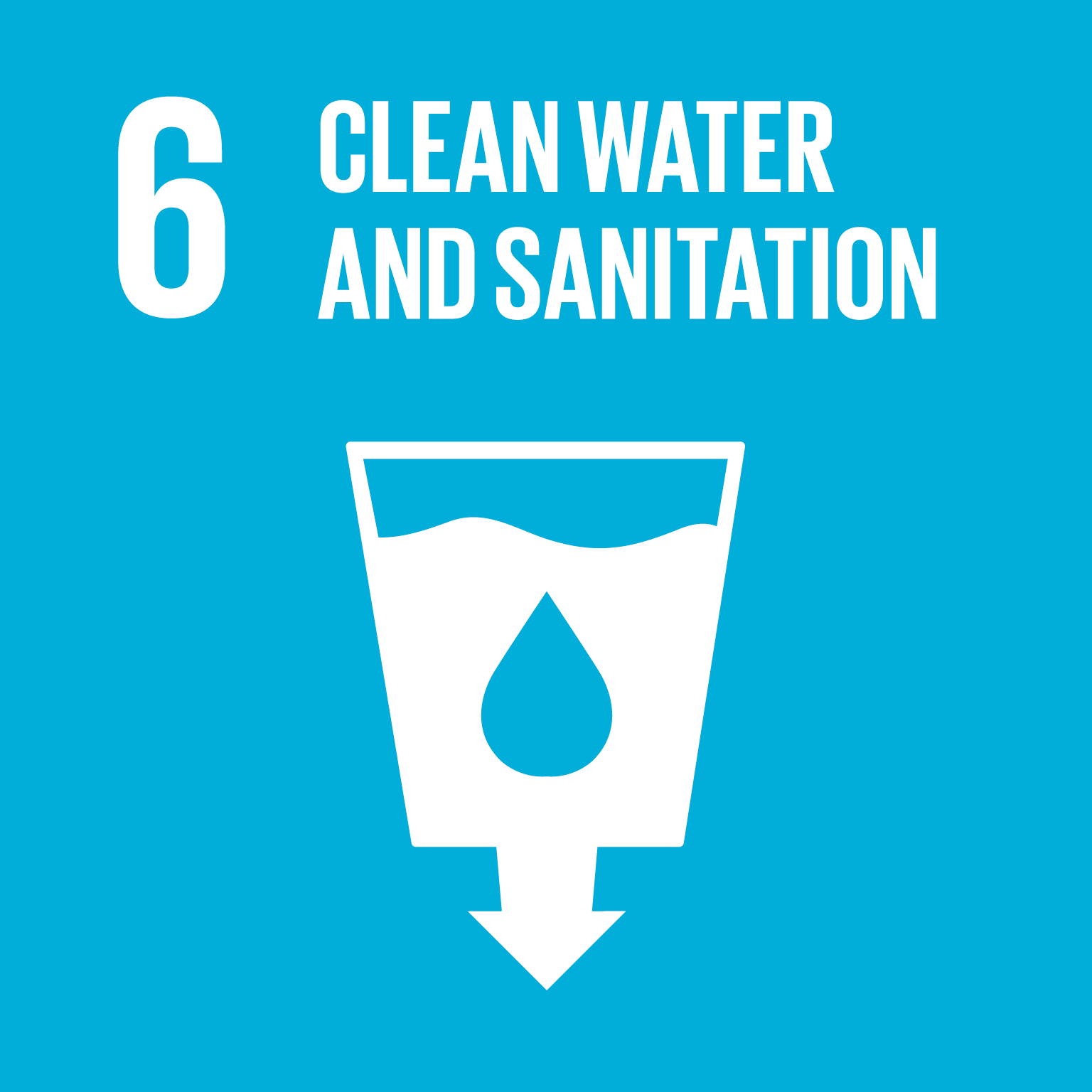
Water is the fountain of life. Let’s remove PFAS forever chemicals from drinking water. Image: “Een oranje vontijn” by graphic artist Japiot, 2011. Dedicated by the artist to the universal public domain, CCO 1.0. Included with appreciation.
Water is the fountain of life: our bodies are over 60% water, and some plants are as much as 90% water. We can live three weeks without food, but only three days without water. But while our body and natural needs have not changed, water has. Industrial chemicals have washed down our drains and into our drinking water supply. These include microplastics found in household cleaning products (think “scrubbers”) and even cosmetics (think “smoothers and fillers”).

PFAS chemicals are endangering our water supply. Image: “Perfluorooctanessulfonic acid, PFAS” by graphic artist Jynto, 2011. Dedicated by the artist to the public domain, CCO 1.0. Included with appreciation.
But among the most troubling additions to our water supply are PFAS (per – and polyfluoroalkyl) compounds called “forever chemicals.” They are ubiquitous. Have a teflon pan for cooking? You could be adding PFAS to your omelette. Grabbing take-out pizza for the family? If your pie comes in a grease-proof pizza box, that container may have PFAS substances. Serving trout for dinner? Fish from waterways that harbor PFAS may contain the chemicals. It’s a global problem. American companies DuPont and 3M may have started it, but now PFAS chemicals are present in water worldwide. Clean drinking water is one of the first quests of human history, with early achievements like the Roman aqueducts or the New River of England. But Italy now faces PFAS problems, and England’s Environment Agency reported in 2021 that PFAS is widely present in English surface water and groundwater in concentrations of disturbing magnitude. In fact, a recent UK directive goal of achieving good quality of all waterways by 2027 could now need to be revised to 2063, due to the problem of PFAS.
Many PFAS chemicals are dangerous to human health. Image: “Effects of exposure to PFASs on human health” by European Environment Agency, with image vectorization by Mrmw, 2019. Creative commons 2.5. Included with appreciation.
There are more than 8,000 different forever chemicals, many troublingly toxic and stubbornly persistent. PFAS can be damaging to human systems, resulting in hormonal problems and perhaps causing diseases such as cancer. The chemicals are especially dangerous for those who are pregnant. A legal settlement with 3M on PFAS, amounting to $10.3 billion over 13 years and the pledge to exit all PFAS manufacturing in 2025, may pave the way for more action by industry to stop the use of forever chemicals. 3M had some explaining to do to its investors. The settlement was revised and then renegotiated to $12.5 billion, spreading payments out until 2036. But you can take preventative measures now.
I. NOW: Here are two steps you may wish to take now regarding PFAS.
Test your drinking water for PFAS. Image: “Drinking water sign” by Dr. Torsten Henning, 2009 with derivative graphics by Shizhao. Creative commons 3.0. Included with appreciation.
#1 Detection. If you obtain your household drinking water from a municipal source, your local water utility should have relevant data. If not, you can test your household water yourself, using a certified lab with approved testing methods. Need help finding a lab? Here’s a start. Or, if you love dipping your pole in the local lake or river for a day of fishing, in the U.S., you can contact State and Tribal experts for information on your local water source’s PFAS measurements.

Filter your water. Image: “Biosand Water Filter” by graphic designer TripleQuest, 2010. Creative commons 3.0. Included with appreciation.
#2 Filtration.
Some households may benefit from using water filtration systems but there are so many kinds of PFAS chemicals with so many different compounds that one-filter-for-all is proving difficult. Sandia National Laboratories is working on an advanced filtration system that will collect many kinds of PFAS substances. However, once you have filtered out the PFAS, be aware that the waste material will be concentrated and highly toxic. Municipalities and cities may need to find a way for households (and organizations including hospitals and schools) to send their filled filters to a safe disposal center. For now, installing an activated carbon filter, made from organic materials with high carbon properties like wood, lignite and even coal, sometimes made with granular activated carbon (GAC), can help. GAC filters work well on longer-chain PFAS (like PFOA and PFOS) but shorter-chain formats like (PFBS and PFBA) may slip through. Resins are an option. In this category, AER filters can remove 100% of PFAS, but the need to change filters often is still a problem. Finally, high-pressure membranes, like nano-filtration or reverse osmosis, can remove PFAS. Nano-filtration membranes remove particles but retain minerals; reverse osmosis removes minerals as well. Membrane filters can remove 90% of PFAS, including the elusive short-chain kinds.
II. SOON: Emerging Innovations and Solutions for PFAS
Destruction
Teflon may contain a particularly durable type of PFAS that can withstand high heat. Image: “Teflon Plan” by photographer MdeVicente, 2014. Dedicated to the public domain by the photographer. Creative commons 1.0. Included with appreciation.
That teflon pan in your kitchen hints at a problem in achieving permanent destruction of PFAS. Teflon is a kind of PFAS called PTFE, and it is specially formulated to remain intact in temperatures as hot as 500 Fahrenheit (260 Celsius). Moreover, when we burn PFAS in its longer-chain form, it merely transforms into short-chain PFAS that floats into the air, and then drifts down into groundwater and eventually pours right back out of your tap water. To combat that indestructibility, a laboratory at the University of British Columbia and a team at the University of California, Riverside, are working on methods using electrochemical and photochemical techniques. Initial results are promising: using low wavelengths of ultraviolet light, scientists are achieving PFAS breakdown. Professor Haizhou Liu, study author, commented that the by-product of this method of destroying PFAS is actually something beneficial – fluoride, the same chemical commonly added to toothpaste that can help strengthen teeth. The system is now entering a larger scale phase with the goal of designing a UV reactor that can process millions of gallons (or liters) per day and can be attached to municipal water treatment plants.

Image: “Acidimicrobium ferrooxidans.” by Manfred Rohde, Helmholtz Centre for Infection Research, Braunschweig, 2009. Creative commons 3.0. Included with appreciation.
Another approach? Microbes. Princeton University found that Acidimicrobium bacterium A6 proved effective at removing 60% o PFOS and PFOA in the lab. A subsequent study at the University of California headed by Professor Yujie Men is exploring bacteria and enzymes that can speed up the “forever” into faster dissolution.
Cessation

“Disappearing” by photographer Dirk Duckhorn, 2013. Creative commons 2.0. Included with appreciation. Developing a timeline to achieve cessation of harmful PFAS chemical is now underway; eventually, most forever chemicals will disappear. Stopping manufacture and sales of fossil-fuel powered vehicles is a goal with dates. Achieving net-zero carbon emissions is a target with increasingly-agreed timelines. Limiting methane emissions is now a global pledge. With the 3M legal settlement, we are now seeing a proliferation of legal actions regarding forever PFAS chemicals. The very first lawsuit regarding damages from use of PFAS, then aimed at DuPont’s use of PFAS in manufacturing Teflon, (Tennant v. DuPont) was in 1999; it was settled in 2001. Right now, in 2023, thee are 25,000 claims against DuPont and 3M as well as Chemours and Corteva. In the 1990’s, so-called “Big Tobacco” lawsuits amounted to $200 billion. PFAS is on the way to meet or beat that tally. Eventually, we will phase out PFAS. But until then, you can find ways to protect yourself and your family by avoiding products containing PFAS, filtering your home water supply, supporting political and civic initiatives to keep drinking water safe and sustainable. All these approaches will help to achieve United Nations Sustainable Development Goal #6, and will keep you and your family, schools, hospitals, and business organizations, healthier.

United Nations Sustainable Development Goal #6. Image: “SDG 6” by UN. Public Domain. Included with appreciation.
3M. “3M resolves claims by public water suppliers, supports drinking water solutions for vast majority of Americans.” 23 June 2023. https://investors.3m.com/news-events/press-releases/detail/1784/3m-resolves-claims-by-public-water-suppliers-supports
Environmental Protection Agency (EPA). “PFAS explained.” https://www.epa.gov/pfas/pfas-explained
Environmental Protection Agency (EPA). “The Drinking Water Treatability Database (TDB).” https://tdb.epa.gov/ted/about
Rizzo, Pat. “3M’s revised PFAS settlement includes atypical liability terms.” 6 September 2023. Bloomberg Law. https://news.bloomberglaw.com/environment-and-energy/3ms-revised-pfas-settlement-includes-atypical-liability-terms
Tennant, et al v. DuPont, et al., 11 June 1999. https://www.govinfo.gov/app/details/USCOURTS-ohsd-2_13-cv-00334
TNI Lams, National Environmental Laboratory Accreditation Management System, a central repository of accredited testing laboratories for PFAS. https://lams.nelac-institute.org/
Turns, Anna. “Can we take the ‘forever’ out of forever chemicals?” 18 October 2023. Future Planet/BBC. https://www.bbc.com/future/article/20231016-cleaning-up-pfas-forever-chemicals
United Kingdom (UK). “Poly- and perfluoroalkyl substances (PFAS): sources, pathways, and environmental data: summary.” 26 August 2021. https://www.gov.uk/government/publications/poly-and-perfluoroklyl-substances-pfas-sources-pathways-and-environmental-data/poly-and-perfluoroalkyl-substances-pfas-sources-pathways-and-environmental-data-summary
United States District Court for the District of South Carolina. “Aqueous film-forming foams products liability litigation.” Master Docket Number 1:18-mn-2873-RMG, Civil Action Number 2:23-v-03147-RMG, August 28, 2023.
Building the World Blog by Kathleen Lusk Brooke and Zoe G. Quinn is licensed under a Creative Commons Attribution-NonCommercial-NoDerivs 3.0 U

